

From Victim to Heroine: Understanding the Unique Arc of the Heroine’s Journey
As one might imagine, the journeys that a male and female protagonist might take on the road to heroics are quite different. Feeling limited by the constraints of Joseph Campbell’s Hero’s Journey, therapist Maureen Murdock wrote The Heroine’s Journey: Woman’s Quest for Wholeness and thus created an entirely new archetypal path.
Popular Disney tales like Mulan , Frozen , and Brave are great examples of how the Heroine’s Journey can be used as a storytelling tool. By taking your primary character through 10 stages of growth and introspection, you can create narrative arcs that both ring emotionally true and feel deeply satisfying to your readers.
You’re always free to shift and alter the stages as you see fit, but in this piece, we’ll go over the basic breakdown so you can get an idea of how the Heroine’s Journey works.
What’s the Difference Between the Hero’s and the Heroine’s Journey?
Unlike Campbell’s tale of tangible success and validation, Murdock’s version focuses on a psycho-spiritual internal journey of healing. It emphasizes emotional understanding, spiritual exploration, and finding a sense of self-worth. Rather than seeking an external object, heroines are seeking some sense of identity that they’ve lost by immersing themselves in a masculine-driven world.
As Murdock famously put it: “Women don’t need to make the journey. In the whole mythological tradition, the woman is [already] there. All she has to do is to realize that she’s the place that people are trying to get to.”
https://media.giphy.com/media/3o7qDNLF8D2Lqe8GGc/giphy.gif
Let’s get one thing clear—while the Heroine’s Journey is about the feminine, it’s not limited to just female characters. Just like the Hero’s Journey can be embarked on by characters of any gender, so too can this tale.
Stage #1: Separation from the Feminine
Our story starts with our heroine rejecting the traditional, feminine role society has assigned to them. Rather than being bound by the expectations of others, they step out on their own. In Mulan , this stage is represented by her refusal to adhere to the traditional expectations of Chinese women at the time—in particular, getting married.
Stage #2: Identification with the Masculine
https://media.giphy.com/media/dsQrzqmtwYnobTQBDW/giphy.gif
The second stage focuses on the heroine learning from and taking control of their own story in the same way a masculine hero might. They start to mimic masculine behaviors that they think will help them get ahead. Think of Elsa in Frozen , who learns self-control and discipline in order to suppress her own powers.
Stage #3: The Road of Trials
There is no Heroine’s journey without a killer set of challenges. Our heroine will have to traverse a series of obstacles—both physical and psychological—in order to prove their worth. The best example is Mulan when she proves her worth as a fighter during training.
Stage #4: The Illusory Boon of Success
https://media.giphy.com/media/WPWuDXKhjmB4OnbhXq/giphy.gif
By now, our heroine is starting to become aware of their own strengths. They start to enjoy the fruits of their labor as she finds success in the traditional masculine sense. But, to their own dismay, they realize that it feels a lot emptier than they anticipated. We see this a lot in films where the protagonist earns a new job title or a promotion—only to be left feeling unfulfilled.
Stage #5: Awakening to Spiritual Emptiness
Our heroine starts to feel a void within them, an emptiness that is both spiritual and emotional. They find themselves questioning the point of it all and whether what they were after is enough to truly make her feel fulfilled. Snape from Harry Potter is a great example of a character who goes through this stage—for him, it’s about realizing that his loyalty to Voldemort is futile.
Stage #6: Initiation and Descent to the Goddess
https://media.giphy.com/media/l2R0corOGwFTlKZjO/giphy.gif
Here our character has a dark night of the soul as they’re forced to confront the shadow parts of themselves and come to terms with their own truth. Our heroine will be taken into a realm of the unknown, where their identity is challenged. Much like Zuko from Avatar: The Last Airbender when he learns to accept his anger and that he made the wrong decision in joining Azula.
Stage #7: Yearning to Reconnect with the Feminine
This stage is about severing any ties to institutions or people who comprise who our heroine is on the inside. The aim here is to embrace their own individual identity and journey within. In Buffy the Vampire Slayer , Spike eventually helps protect Buffy from harm without telling her that he indeed has a soul again. Why? Because he feels pulled to the idea of protecting her without any ulterior motives or expectations.
Stage #8: Healing the Mother/Daughter Split
https://media.giphy.com/media/VbDm4pTuIEQAviEBQX/giphy.gif
Emerging from her dark night of the soul with a newfound identity and purpose, our heroine can now embrace the feminine parts that they had previously disowned. They call upon that strength to help them complete their mission. Much like how Merida uses her knowledge of the old ways to save her family in Brave .
Stage #9: Healing the Wounded Masculine
This journey isn’t about casting aside the masculine characteristics that our heroine has come to embody—it’s about shedding any perceptions that are toxic and unhelpful. For example, Rey from Star Wars: The Last Jedi has to accept that has the power to create her own sense of belonging and purpose without relying on those she once deemed as more knowledgeable.
Stage #10: Integration of Masculine and Feminine
https://media.giphy.com/media/1000WjcUQeqOaY/giphy.gif
Who doesn’t love a good full-circle moment? Our heroine has come to terms with their own strengths, both feminine and masculine. They have accepted the light and dark within them, no longer seeking approval from anyone else. The endings of tales for iconic characters like Simba in The Lion King or Katniss Everdeen from The Hunger Games are great examples of this.
Want To Dive Deeper?
The Heroine’s Journey is an intriguing template for writers to explore, but this short guide is only the beginning. If you really want to learn how to leverage this archetype for your writing, I encourage you to read 45 Master Characters: Mythic Models for Creating Original Characters by Victoria Lynn Schmidt (her melting pot version of the Hero and Heroine’s Journeys) and The Heroine’s Journey: For Writers, Readers, and Fans of Pop Culture by Gail Carriger , which expands on Murdock’s work.
By understanding the basics, you’ll have more insight into how this archetype works in your writing. And if you need someone to guide you through the process, I’m here to help. Click here to check out my book coaching services , and together, we can co-create the ideal journey for your heroine.
Submit a Comment Cancel reply
Your email address will not be published. Required fields are marked *
Save my name, email, and website in this browser for the next time I comment.
Submit Comment

I’m Pam, Your Story Coach
I help busy professionals write and polish the book of their dreams. Let’s bring authenticity to your speculations, flow to your structure, and heart to your words.
Choose Your Category
Related posts.

Managing Imposter Syndrome, Part 2: The Perks of Being a Beginner
Imposter Syndrome can undo years of hard-earned confidence. Most of the writers I work with are seasoned professionals who reached comfortable levels of success in their first careers—and those first careers had nothing to do with writing books. Heck, my first career...
Managing Imposter Syndrome, Part 1: Decoding the Fear of Being a Fraud
It doesn't matter if you're a first-time author or have written a series of bestselling books—everyone has a fear of being "found out." Even Pulitzer Prize-winning memoirist and poet Maya Angelou. “I have written 11 books but each time I think ‘Uh-oh, they’re going to...
Sign Up To My Newsletter Where I Give Weekly Tips
If you loved this post, you’ll love these.

Every Good Story Boils Down to Cause and Effect
There’s a lot that goes into telling a good story. You need to develop undeniably relatable characters, create captivating worlds and scenarios, and build tension with every twist and turn. But no amount of compelling detail or dialogue can fix a tale that’s...
Apr 17, 2024 | 0

If You Want to (Finally) Finish Your First Draft, Stop Doing This
Don't stall out on that first draft. We've lost thousands of riveting, moving, and potentially life-changing novels to first-draft purgatory. The last word of the first manuscript is a milestone many authors never reach because they get stuck in the cycle of...
Mar 19, 2024 | 0

How to Use CliftonStrengths to Drive Character Motivation
People—even fictional ones—don't run away from home, battle fire-breathing dragons, or lie to their boss for no good reason. There's always a reason. And understanding what motivates each of your characters to act (or not) is key if you want to write a page-turner....
Mar 12, 2024 | 0
Privacy Overview

- Kindle Store
- Kindle eBooks
- Literature & Fiction

Promotions apply when you purchase
These promotions will be applied to this item:
Some promotions may be combined; others are not eligible to be combined with other offers. For details, please see the Terms & Conditions associated with these promotions.
Audiobook Price: $17.46 $17.46
Save: $9.97 $9.97 (57%)
Buy for others
Buying and sending ebooks to others.
- Select quantity
- Buy and send eBooks
- Recipients can read on any device
These ebooks can only be redeemed by recipients in the US. Redemption links and eBooks cannot be resold.

Download the free Kindle app and start reading Kindle books instantly on your smartphone, tablet, or computer - no Kindle device required .
Read instantly on your browser with Kindle for Web.
Using your mobile phone camera - scan the code below and download the Kindle app.

Image Unavailable

- To view this video download Flash Player
Follow the author

The Heroine's Journey: For Writers, Readers, and Fans of Pop Culture Kindle Edition

- Print length 324 pages
- Language English
- Sticky notes On Kindle Scribe
- Publication date October 1, 2020
- File size 1820 KB
- Page Flip Enabled
- Word Wise Enabled
- Enhanced typesetting Enabled
- See all details
- Kindle (5th Generation)
- Kindle Keyboard
- Kindle (2nd Generation)
- Kindle (1st Generation)
- Kindle Paperwhite
- Kindle Paperwhite (5th Generation)
- Kindle Touch
- Kindle Voyage
- Kindle Oasis
- Kindle Scribe (1st Generation)
- Kindle Fire HDX 8.9''
- Kindle Fire HDX
- Kindle Fire HD (3rd Generation)
- Fire HDX 8.9 Tablet
- Fire HD 7 Tablet
- Fire HD 6 Tablet
- Kindle Fire HD 8.9"
- Kindle Fire HD(1st Generation)
- Kindle Fire(2nd Generation)
- Kindle Fire(1st Generation)
- Kindle for Windows Phone
- Kindle for BlackBerry
- Kindle for Android Phones
- Kindle for Android Tablets
- Kindle for iPhone
- Kindle for iPod Touch
- Kindle for iPad
- Kindle for Mac
- Kindle for PC
- Kindle Cloud Reader
Customers who bought this item also bought

Editorial Reviews
From the author, about the author, product details.
- ASIN : B08D5ZSNRB
- Publisher : GAIL CARRIGER LLC; 1st edition (October 1, 2020)
- Publication date : October 1, 2020
- Language : English
- File size : 1820 KB
- Simultaneous device usage : Unlimited
- Text-to-Speech : Enabled
- Screen Reader : Supported
- Enhanced typesetting : Enabled
- X-Ray : Enabled
- Word Wise : Enabled
- Sticky notes : On Kindle Scribe
- Print length : 324 pages
- #7 in Mythology & Folk Tales Literary Criticism
- #37 in Fairy Tales, Folk Tales, Legends & Mythology Literary Criticism
- #64 in Authorship

About the author
Gail carriger.
Gail Carriger writes comedies of manners mixed with paranormal romance (and sexy urban fantasy as G. L. Carriger). Her steampunk books include the Parasol Protectorate, Custard Protocol, Supernatural Society, and Delightfully Deadly series for adults, and the Finishing School series for young adults. She is published in many languages and has over a dozen NYT bestsellers. She was once an archaeologist and is overly fond of shoes, octopuses, and tea. gailcarriger.com
Subscribe to Gail's newsletter ~ The Chirrup! http://gailcarriger.com/chirrup
Customer reviews
Customer Reviews, including Product Star Ratings help customers to learn more about the product and decide whether it is the right product for them.
To calculate the overall star rating and percentage breakdown by star, we don’t use a simple average. Instead, our system considers things like how recent a review is and if the reviewer bought the item on Amazon. It also analyzed reviews to verify trustworthiness.
Reviews with images

- Sort reviews by Top reviews Most recent Top reviews
Top reviews from the United States
There was a problem filtering reviews right now. please try again later..
Top reviews from other countries
- Amazon Newsletter
- About Amazon
- Accessibility
- Sustainability
- Press Center
- Investor Relations
- Amazon Devices
- Amazon Science
- Sell on Amazon
- Sell apps on Amazon
- Supply to Amazon
- Protect & Build Your Brand
- Become an Affiliate
- Become a Delivery Driver
- Start a Package Delivery Business
- Advertise Your Products
- Self-Publish with Us
- Become an Amazon Hub Partner
- › See More Ways to Make Money
- Amazon Visa
- Amazon Store Card
- Amazon Secured Card
- Amazon Business Card
- Shop with Points
- Credit Card Marketplace
- Reload Your Balance
- Amazon Currency Converter
- Your Account
- Your Orders
- Shipping Rates & Policies
- Amazon Prime
- Returns & Replacements
- Manage Your Content and Devices
- Recalls and Product Safety Alerts
- Conditions of Use
- Privacy Notice
- Consumer Health Data Privacy Disclosure
- Your Ads Privacy Choices
- Transmedia Storytelling
The S/Heroes Journey: Women Take the Lead

How moms can inspire their teen daughters by changing the storyline

Anyone who’s watched a Hollywood blockbuster knows how the story goes: our hero, coming-of-age, is called to adventure, crosses into the dangerous unknown, meets the enemy, conquers his fear, slays the dragon, overcoming superhuman obstacles. Saving his tribe along the way.
It’s Star Wars, Harry Potter and Avatar rolled into one. The “hero’s journey,” has been the stuff of myth since ancient times.
A decidedly individualistic story: the hero (usually male) overcomes his fear to venture out and conquer the enemy; saving his family and tribe after battling demons and dragons, he returns home to accolades. The proverbial “hero’s welcome”.
There’s another story arc that’s less reflected in film and literature but, perhaps, truer to life. The “heroine’s journey,” takes the Cinderella story (a prince will rescue me) to a different place, with the heroine awakening to her own power, bringing together allies to support her.
Mapping the s/hero’s journey
It is powerful to hold up the heroine’s journey in the mirror to guide our daughters through the joys and obstacles she will encounter in her life. The woman’s quest for wholeness relies on a separation and return to self. A great storytelling device but, how might it apply to raising our daughters?
Our lives are made up of stories—some that shame us, trap us or put us down—others that enrich, empower and help us evolve. Understanding the heroine’s journey helps us become more aware of what women face up to—and how they can lead.
Moms who model this for their girls may find inspiration for their own journey.
Here, according to author Victoria Schmidt, are the nine stages of the heroine’s journey.
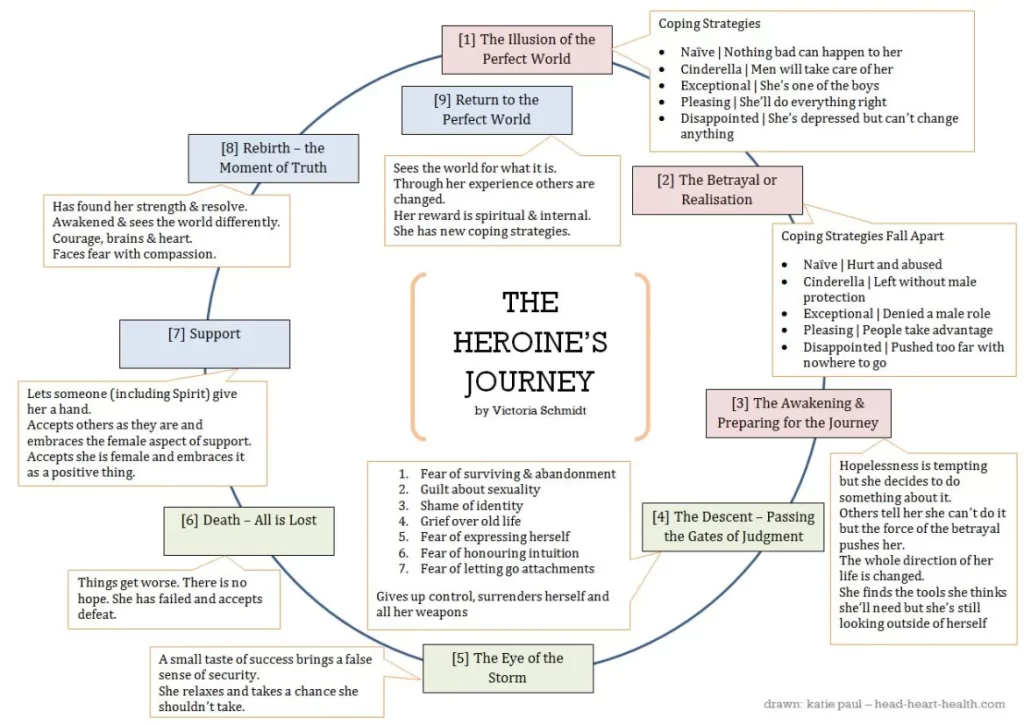
For mothers who would raise strong, whole and daughters prepared to navigate through the uncertainty of our times, this provides a whole new story, authenticating their inner awareness, intuition and adeptness, and the ability to choose friends who support each other along the way.
Finding your inner shero: initiating the conversation
As she prepares for her own journey, you may want to equip your daughter with a roadmap to live her journey fully. To offer tangible guidance, here are three conversations you might want to initiate with your teen daughter:
- Make friends with your “inner critic.”
That critic may be the voice of your mother, the perfection curated in her Instagram feed, or the loud, insistent misogynistic voices that call out any imperfection. Experts say that, from an evolutionary perspective, the critical voice is protective (“Lions, and tigers, and bears. Oh my!”). But in her social life—and perhaps your own (“This dress makes me look fat”; “Everyone hates me”), not so much.
Ignoring them just makes them louder. Instead, when you see she’s beating herself up over self-criticism, or friend drama, encourage her to strike up a conversation: where she thinks that negative voice is coming from? Is it true, or is this just me doubting myself?
Or have her name that voice: “Thanks, Grandma, for your advice. I know you love me. But I think this may be something you were hurt by growing up. It’s not my problem.”
Oh, and mom, have you made friends with your own inner critic yet? Not a call to “slay the dragon,” but to confront the painful past. Might be worth sharing with her how you’re making the effort.
2. Disregard that face in the social media mirror!
TikTok and Instagram might seem harmless enough obsessions—until they are not. When everyone in her feed is curating her perfect life, it is tempting to do the same. And then to beat herself up over her imperfect life.
Pursuit of something that’s unattainable may send her spiraling down. But check in on the reality: can everyone else but her really be living the dream? And how might the constant pursuit of an illusion actually be harmful?
Maybe you could encourage taking an occasional break from social media as a challenge. Take a “technology sabbath” where, say, every Sunday is a phone-free day.
And while you’re at it, what’s reflecting back in your IG mirror? Does your social feed reinforce how your failing to measure up—or support ways you are good enough?
Make the tech detox a mother-daughter challenge and see talk about how it changes your outlook.
3. Have her back.
Adolescence is a time of fitting in and following the crowd. Think back to your own teen years: how did it feel not to fit in?
Our brains have evolved to help us pick up social cues. Changes in the brain starting in the tween years reflect increasing peer acceptance even as teens seek greater independence from their families.
It’s a scary time. Not yet ready to move away entirely, she may seek the safety of the crowd. Fear of rejection may make her rebel from all you’ve taught her. Or take her down a dark path. In true heroine’s journey fashion, she sets out and rejection sets her back.
What’s a mom to do? Undoubtedly feel rejected when she pushes you away. But you still have a role to play in helping her cultivate resilience, to see new ways forward.
My best advice: don’t take it personally. Be there when she needs you. Show an interest in her life. Listen. Reflect back what you hear her say. Give her responsibilities which, when she lives up to them, earn her greater freedom. Show her you care, but don’t let her walk all over you. Set healthy boundaries.
Nurture yourself : Make some meaningful Mom time
Meanwhile, don’t expect her to take an interest in your life. Confide in your girlfriends. Risk seeing if your own childhood traumas are coming out in trying to keep her “safe.”
And investigate your own story. What passions did you put aside to raise a family? What’s holding you back? Who can you count on when you need a friend—and who’s stopped being there for you?
Each new phase offers a chance for rebirth and renewal—and to be a role model. I invite you to live the heroine’s journey. So tell me: where are you in your journey?
Leave a Reply Cancel reply
Your email address will not be published. Required fields are marked *
Save my name, email, and website in this browser for the next time I comment.
The Heroine Journeys Project
Exploring and documenting life-affirming alternatives to the hero's journey.

“Kicking the Stone”: Two Sisters and a Relationship, a Trifecta of Heroine Journeys
Written by Nancer Ballard; ed. assistance by Savannah Jackson.
Barbara Leckie’s “Kicking the Stone,” in Salamander’s Summer 2018 issue, is a wonderful, complex short story that interleaves three life stories that broadly follow Victoria Schmidt ’s formulation of the heroine journey. The short story revolves around the life trajectories of two sisters and a husband and the changing relationships between and among them.
In our lives we often complete the heroine’s journey cycle nonlinearly. We return to stages as new challenges are presented, and we examine previous experience more deeply. We can also work on several stages at one time. “Kicking the Stone,” illustrates the role that memories play in our navigating and narrating our lives, and flashbacks play in composing stories. Indeed, the “present” of the story takes place in the relatively static setting of a University town coffee shop in the space of about an hour. Flashbacks provide tension, action, context, emotional complexity, and pacing.
The story begins in a cozy coffee shop where Sylvia waits for her sister. It’s early spring, but a surprise snow storm has temporarily buried the crocuses. The setting suggests Victoria Schmidt’s heroine’s journey’s Stage one –the illusion of the “perfect” or “normal” progressing world, but almost immediately we realize that things are not what they seem because Sylvia is tearing tiny holes in numerous packages of sugar and pouring them into her tea to make a sugary slush at the bottom, as if her drink cannot be made sweet enough to swallow. She overhears a student at the next table say, “We are never quite prepared for death. I don’t think.” The overheard statement sounds unreal due to the lack of context and curious grammatical construction, but also ominous because it comes so soon in a composed short story.

From this description of Marg as the “successful” sister and Sylvia as the plainer one who travels in her sister’s orbit, we are jolted by the matter-of-fact revelation that Sylvia is living, and has lived, with Marg’s husband for years. We are also told that Sylvia believes Marg had been negligent with her husband. The story thus abruptly enters the land of betrayal, or at least, coping strategies have not gone as expected.
We return to the present and Marg, the accomplished jilted sister, asks Sylvia if she is angry at her, again apologizes for being late, and asks if Sylvia has been waiting long—signaling that the story itself is moving on to Stage 3 —Awakening and Preparing for the Journey. Sylvia reinforces this sense of anticipation by telling Marg that she has something to tell her without revealing what it is. Both sisters lean toward each other, signaling the importance of their relationship which the reader senses has been, and will be, its own journey.
The author again references Sylvia’s “affair” with Marg’s husband ( the Stage 2 betrayal ), and then a second blow up ( Stage 6 ), before describing the period between the estrangements when the sisters reconciled and referred to Hugh, Marg’s former husband and Sylvia’s current partner as “our Hugh.” This moment feels like a Stage 5 “Eye of the Storm”– during which the sisters had managed to find equilibrium in their relationships with Hugh and each other.
We return to the coffee shop with Sylvia privately wishing she could begin the current conversation with something “as light and intimate and bonding” as an “our Hugh” reference– strongly suggesting that the story and the sister’s relationship and lives are headed for a Descent ( Stage 4 ).
The story then takes one last backward glance at stage one’s illusory perfect world as Sylvia tries to find her footing before moving forward with the descent. She muses that she would have liked to open a similar coffee shop-bookstore, but the vision quickly fades. From here, the story continues to tack forward and back, like a carefully crafted multi-thread chain stitch that braids together the heroine’s journeys of the sisters and their relationship. We learn that Marg and Hugh were in a car accident years before that left Hugh in a wheelchair (his descent). Marg, who was pregnant at the time, appears to have recovered, but she has some irreparable nerve damage, and she lost her baby. Thus, we are introduced to Marg and Hugh’s experience of death (stage six) before we find out Sylvia’s news.

The narrator continues to slice back and forth through Sylvia’s memory and narrative flashback, revealing the literal and psychological journeys of each of the characters as they move toward and away from their relationships with one another. With each move, Leckie illustrates the effect of a character’s action on the others and their relationships, which lead to new actions and effects that ripple throughout all the characters’ lives.
Back in the present, Sylvia reveals that the reason she has asked Marg to coffee is to tell her that Hugh (her partner now for at least a dozen years after the accident) has stage four colon cancer. We see a moment of shared concern for Hugh and for one another. Sylvia then refuses Marg’s request to go see Hugh immediately which we sense is, for Sylvia, a moment of truth and resolve ( Stage 8 ) in the midst of her responding to others’ decisions and calamities. In this moment Sylvia is able to know and say what she needs—as hard-hearted as it seems at that moment of the story.
The story again flashes back to Sylvia’s support of Hugh and Marg after their accident, Marg’s growing impatience with Hugh, and Hugh’s attention to Sylvia in a way that makes her feel that she is more than Marg’s shadow. The story is constructed so that the reader is repeatedly surprised by the flashback action and then comes to understand and empathize with the character(s) and their journeys only to be surprised by another revelation—from Marg’s affair with a neighbor which launches Sylvia’s romantic relationship with Hugh, to Hugh’s confession to Sylvia that he and Marg have been once again sleeping together after Sylvia tells Marg that she is pregnant, etc. In each betrayal and struggle we wonder how things can be repaired after this move while hoping that somehow they can be, and knowing that somehow they must have been repaired, for now the sisters are sitting in a coffee shop talking honestly with each another and expressing concern for Hugh. There are no neatly tied-up endings in this story or in these lives, but there is beauty in the efforts each makes to live an authentic life and preserve difficult relationships that change in ways they do and don’t control under circumstances that are never ideal.

Nothing is simple for these characters, but there is an underlying conviction that they will do whatever it takes to affirm their important relationships and themselves, although they don’t yet know how this will happen. In the last paragraph of the story, after Marg has left the coffee shop and Sylvia is preparing to leave, Sylvia remembers Marg telling her the last last thought she had before the SUV slammed their car into the car ahead in the accident that altered the course of all of their lives. “Brace Yourself” is both a warning and a strangely affirming declaration that the task of life, regardless of our current situations, is to engage reality while acknowledging and aligning ourselves as best we can with internal truths.
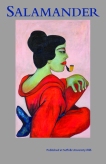
“Kicking the Stone” can be found in the summer 2018 issue of Salamander . Salamander is one thirty-plus literary journals offered by the Journal of the Month Club that enables you to sample a variety of literary journals for the price of one or two. Click here to see their holiday specials.

Thanksgiving Reflections
Until women can visualize the sacred female, they cannot be whole and society cannot be whole. – Elinor Gadon
In late November in the United States, Thanksgiving is a holiday to celebrate the harvest and gratitude. Many of us also share food with people from other cultures and circumstances. The first “American” Thanksgiving was celebrated by 53 Pilgrims and 90 Native Americans in 1621. Thanksgiving was officially declared a federal holiday by Abraham Lincoln in 1863 during the American Civil War to express hope for an end in civil strife, and as a day of gratitude. Some Americans also observe American Thanksgiving as a day of mourning to commemorate genocide against Native Americans by United States settlers.
Not surprisingly, the United States was not the first to celebrate harvest feast days. The Canadians held October harvest feast celebrations years before the Pilgrims arrived, and the French and Spanish have been celebrating harvest feast days since at least the 16 th century. Wisdom practices such as honoring female deities connected to nature, expressing gratitude, sharing, and giving, are integral to many indigenous cultures and communities.

We appreciate the thousands of site visitors from around the world who read our blog posts, send comments and suggestions, and ask us questions. We are grateful for the essays, plays, books, and stories sent to us by our readers. In particular we’d like to give a shout out to Jean Marie Bishop who sent us her plays about Jeanette Rankin, the first woman to hold federal office in the United States when she was elected to the House of Representatives in 1916, and Mary Dyer, an American Puritan turned Quaker who was hanged in The Massachusetts Bay Colony in 1660 for defying Puritan law banning Quakers in the colony. We would like to give a shout out to Jody Gentian Bower , author of Jane Eyre’s Sisters; How Women Live and Write the Heroine’s Story who sent us an essay on the Heroine’s Journey; to Duda Dorea , who is translating The Heroine’s Journey Project site into Portuguese so that it can be more widely shared in Brazil, and Judah Quinn, a filmmaker in Australia who is making a documentary on five women’s experiences with the Heroine’s Journey in their lives. We are hoping to feature some of this work in the coming months.

Your most-requested items are the names of books, films, and stories that include a Heroine’s Journey. This fall we have begun to compile lists which we plan to add as permanent page to the site this spring.
Some of the books with heroine journeys that we’ve reviewed in the past year include:

Fun Home by Allison Bechdel (graphic novel, later made into a musical);
Far from the Tree by Andrew Solomon (non-fiction with many heroine journeys depicted in the descriptions of the lives of non-conventional families);
Lincoln’s Dressmaker by Jennifer Chiaverni (historical fiction);
Lila by Marilyn Robinson (fiction);
Once and Future King by T. H. White (the first portion of the book known to many as the story of The Sword in the Stone is a Hero’s Journey, but the book as a whole is a Heroine’s Journey);
Random Family: Love, Drugs, Trouble, and Coming of Age in the Bronx by Adrian Nicole LeBlanc (nonfiction); and
Chalice and the Blade; Our History, Our Future by Riane Eisler is not a heroine’s journey story but traces the origins of the descent of goddess worship and the psychological impacts of the denigration of female deities on men, women, and cultural values through archaeology, anthropology, history and religion.
Movies we have recently reviewed and plan to blog about in the future include:
Boys on the Side directed by Herbert Ross and starring Whoopi Goldberg, Mary-Louise Parker, and Drew Barrymore;
RBG , a 2018 American documentary directed by Betsy West and Julie Cohen, on the life and career of Supreme Court Justice Ruth Bader Ginsburg which includes both elements of the Hero’s Journey and Heroine’s Journey. RBG was chosen by the National Board of Review as the Best Documentary of 2018; and
The Death and Life of Marsha P. Johnson , the story of a Native American’s health worker’s search for the truth about the death of prominent transgender activist Marsha Johnson.
In the next few weeks look for an upcoming post on “Kicking the Stone,” a wonderful short story by Barbara Leckie in Salamander , one of the literary journals that’s one of the offerings from the Journal of the Month Club .
Later in the winter and spring we will be exploring work by Jean Marie Bishop, Elinor Gadin, and suffragist scholar, memoirist, and playwright, Pam Swing and her student playwright co-author, Elizabeth Dabanka. We are also seeking to interview several others working with the Heroine’s Journey in a variety of disciplines.
We will also be focusing on how the Heroine’s Journey can be applied to social activism and, hopefully, collaborating with others working on similar projects.
We would love additional suggestions from our site visitors. Send the name of a book, story or film with a sentence or two on why you think it follows the Heroine’s Journey and we will review it as we work to expand our lists. Meanwhile, may your lives be full and your burdens light.
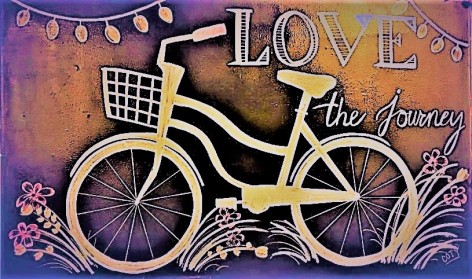
This chalkboard mural by Coty can be found at the wonderful Green Goddess Cafe in Stowe, Vermont.
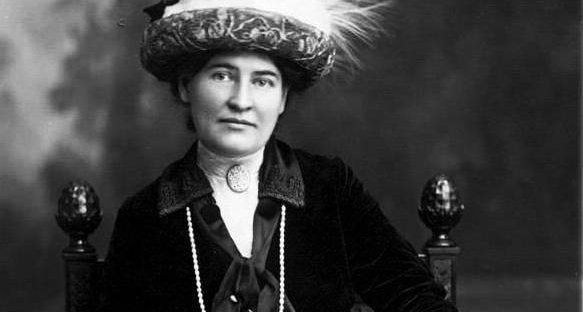
Willa Cather’s “Coming, Aphrodite!”; The Hero and Heroine’s Perspectives on Success
Written by Savannah Jackson; ed. assistance by Nancer Ballard.
Willa Cather’s short story Coming, Aphrodite! includes both a Heroine’s Journey and a Hero’s Journey—with a twist. Published in 1920, it chronicles a woman undertaking the Hero’s Journey while a man simultaneously undertakes the Heroine’s Journey .
Originally a small-town girl from an Illinois prairie, Eden Bower has set her sights on becoming an international-stage star when she moves next door to Don Hedger, an orphaned and independent artist living in a small New York apartment.
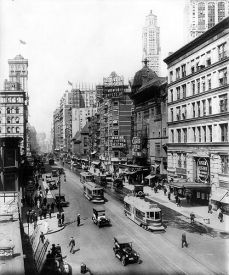
Meanwhile, Hedger, who has grown up in foster homes, has already brushed up against recognition and prosperity as an artist which Cather describes as twice having been on the verge of becoming “a marketable product.” However, Hedger has turned down easy renown because he recoils at being stuck doing “the same old thing over again.” Hedger wants to follow his inner artistic intuition and supports his modest domestic needs through occasional commercial work.
As neighbors, the Eden and Hedger (the story refers to the female protagonist by her first name and the male by his last ) have several brief and tense odd couple-like interactions and then fall into a brief romantic relationship. Their affair begins after Hedger invites Eden to Coney Island, a trip which Eden uses to insert herself into a hot-air balloon performance (for which she has no training) to show off her talents. Hedger, upset by her disregard for his feelings in taking such a this “foolish risk,” forgives her in part because he recognizes that Eden causes him to consider things “that had never occurred to [him]” before.
Their different worldviews, which initially intrigue and excite them, soon lead to conflict. Eden does not understand how there can be any achievement or purpose in being an artist that “nobody knows about” and criticizes Hedger. Eden wants to be popular in the eyes of the general public and she cannot forgive Hedger for consciously rejecting fame. For his part, Hedger believes he has already found success because he works for himself on projects that please him. Hedger wishes to create new things and paint for other artists “who haven’t been born” yet. He is looking towards a future, but it is one that values internal personal progress and ingenuity, not one that is subject to the taste of popular culture. He chides Eden’s focus on public approval, telling her that “a public only wants what has been done over and over.”
After their fight about success (which, of course, cuts to the core of their identity and sense of place and value in the world) Hedger is hurt more than he’d previously imagined possible and leaves Eden for several days “to be among rough, honest people.” when he returns he is ready to forgive Eden and attempt to integrate their lifestyles so they can continue their relationship, but in his absence Eden has found a way to get to Paris, so Hedger finds only a hastily written note of explanation.
In The Hero With a Thousand Face s , Joseph Campbell describes the hero’s journey as “a hero ventures forth from the world of the common day into a region of supernatural wonder. Fabulous forces are there encountered and a decisive victory is won.” Eden has embraced this (hero’s) journey and managed to become successful (at least by her lights). The story picks up when Eden returns to New York after performing in an opera in Paris. She visits an art gallery to ask about Hedger in order to find out if, in her absence, he has become rich and famous. The gallery owner tells Eden that Hedger is a well-received and influential artist among the New York crowd who has gained the respect of others for being “original” and “changing all the time.” Eden cuts the gallery owner’s explanation short, demanding to know if he’s much talked about in Paris, saying that’s all she wants to know. The story then pulls back closes with a wonderfully enigmatic paragraph description of Eden sitting in a car after leaving the gallery as she is being driven to her next performance.
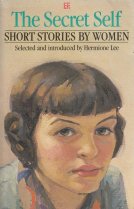
To learn more about Willa Cather and read her short story Coming, Aphrodite! , you can find it here or in Hermione Lee’s wonderful collection, The Secret Self: Short Stories By Women .
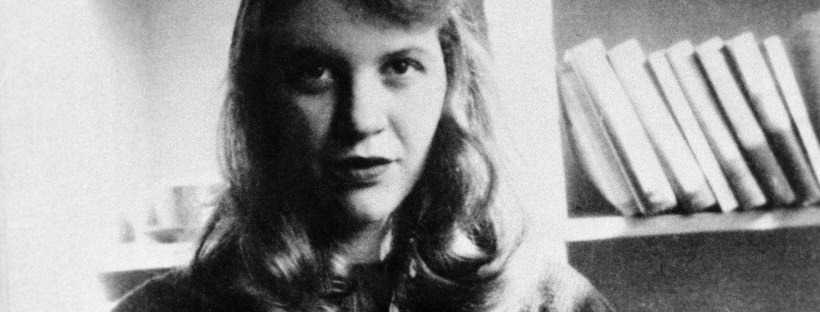
The Heroine’s Journey in Sylvia Plath’s Life and Poetry
Written by Sage Calder; ed. assistance by Nancer Ballard.

The Restored Edition of “Ariel”
I recently found myself rereading Sylvia Plath’s final manuscript, Ariel and other poems. I had read the collection several times before, but this was my first time reading the “ Restored Edition ” — the manuscript exactly as Plath left it. This edition also contains a foreword that casts an entirely different light on the book for me. In the introduction, Plath’s daughter, Frieda, notes that her mother described the book as, “beginning with the word ‘Love,’ and ending with the word ‘Spring.’” Frieda recognizes that her mother wrote the book to talk about the end of her marriage to fellow poet Ted Hughes, and move toward a new life. In contrast to these intentions, Plath left Ariel as her final manuscript before committing suicide in 1963.
It is a constant struggle to discuss Sylvia Plath’s work as an author and poet without bringing her personal life into the discussion. This seems to be a struggle that affects female artists far more than male artists. As Frieda notes in her foreword, “… Ariel’s notoriety came from being the manuscript on her desk when she died, rather than simply being an extraordinary manuscript…”

Plath with her two children, Frieda and Nicholas Hughes
Reading Frieda’s foreword, which is both insightful and earnest, I began thinking about Ariel in relation to the heroine’s journey — first as a collection of poetry, and also as the final collection of poetry before Plath’s death.
In her foreword, Frieda discusses a “unique Ariel voice,” one that had, “an urgency, freedom and force that was quite new in her work.” This voice came as Plath emerged from her marriage to live on her own with her two children. In Victoria Schmidt’s heroine’s journey, Plath’s illusion of the perfect world was broken with her husband’s infidelity. She writes about her pain in poems at the beginning of the collection such as “Barren Woman” and “Thalidomide.” Throughout Ariel we watch Plath work through these issues in preparation for her separation from the security of love. The act of her writing this poetry represents Plath’s descent; she recognizes her faults, she enters the eye of the storm and emerges from it. All of the poems are in the unique Ariel voice, but as the book goes on, we see poems of support. In the poem, “Medusa,” for example, Plath writes – “I didn’t call you at all/ Nevertheless, nevertheless/ You steamed to me over the sea/ Fat and red, a placenta//Paralyzing the kicking lovers…” It is clear that when Plath refers to Medusa in this poem, she is referring to something within herself — the part of her that is able to paralyze and leave lovers, and the one who is able to say to her deceased father in the infamous poem, “Daddy” — “Daddy, daddy, you bastard, I’m through.”
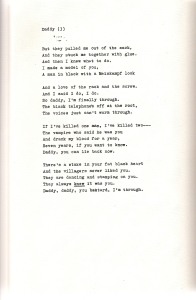
A facsimile of one Plath’s drafts of the poem, “Daddy”
By shedding the men in her life who hurt her and reconnecting with her own feminine power, Plath is tracking toward a heroine’s journey in Ariel. The quest of the heroine is wholeness, which normally implies continuing to live your life. In her real life, Plath was unable to do this — she killed herself and was never able to separate herself from the presence of her husband, since she continued to receive financial support from him and even potentially sought reconciliation. I am not Plath and could not possibly know her life well enough to characterize it as a hero’s journey or a failed heroine’s journey.
Instead, I look to the last poem, which indeed ends with the word “spring.” Plath ends the collection with a series of poems about bees and in her final stanza wonders — “Will the hive survive, will the gladiolas/ Succeed in banking their fires/ To enter another year?” We have come to associate these bees with Plath herself. And she ends — “The bees are flying. They taste the spring.” Plath succeeds in presenting to us a work displaying the heroine’s journey — she writes herself as a heroine who succeeds in leaving her husband and other harmful men in her life behind her. Like the bees, the Plath who is the speaker of the Ariel poems not only plans on surviving into the spring — she already has.

Captain America: A New Kind of Hero(ine)
Written by Katerina Daley; ed. assistance by Savannah Jackson.
By virtue of being super hero es, it would be easy to assume that all popular DC and Marvel superhero films would chart neatly onto the Hero’s Journey . Indeed, popular movies such as the Christian Bale Batman trilogy and the Tobey Maguire Spider-Man trilogy do map smoothly onto these paths. As film-viewing audiences become increasingly interested in more complex story lines there may be more opportunities for superhero(in)es and Heroine’s Journeys. In Captain America: The Winter Soldier (the sequel to Captain America: the First Avenger ) Marvel has created in Steve Rogers/Captain America (Chris Evans) a hero whose selfless and emotionally-driven arc more accurately resembles Victoria Lynn Schmidt’s Heroine’s Journey than it does Joseph Campbell’s Hero’s Journey.
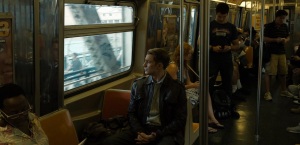
Captain America: The Winter Soldier begins with the very purposeful meeting between Steve Rogers and Sam Wilson (Anthony Mackie). Sam is a former air force para-rescue member who now works with Veterans Affairs helping former soldiers with PTSD. Steve is a perfect case study for this kind of psychoanalysis. Having been a soldier in World War II who witnessed his lifelong best friend plummet to his presumed death, and having been reanimated seventy years after his own presumed death, Steve has many issues to grapple with. In a three minute scene from the previous film involving Steve, The Avengers , he is pictured struggling to come to terms with the world around him. He struggles to understand the end of World War II, the fact that all of his dearest friends are dead, and the preponderance of bizarre technology filling the world around him.
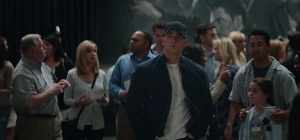
Considering this backstory, it is significant that the first friend Steve makes in this film is Sam and that Sam sees in Steve a familiar vulnerability. After meeting during an early morning run, Sam simply asks, “It’s your bed, right? […] Your bed. It’s too soft,” and in doing so, Sam reveals his own sleep difficulties. Steve acknowledges that he too struggles with sleep and states that his bed now feels like “lying on a marshmallow [and that he] feel[s] like [he’s] gonna sink right to the floor.”
Steve also avoids developing romantic relationships and frequently visits the Smithsonian exhibit on Captain America in order to reinforce his self-inflicted feelings of guilt about the loss of his past friends. He even visits his lost love, Peggy Carter, who is now elderly, suffering from dementia, and forgets his visits the moment he is out of her line of sight. The Mayo Clinic lists sleep issues, emotional numbness, “reliving the traumatic event,” “overwhelming guilt or shame,” and “hopelessness about the future” as markers of PTSD. The film therefore invites the audience to infer that Steve is going through this trauma. As we have observed on our Best Picture Oscar Winners page , Heroine’s Journeys male protagonists often have some kind of marginalizing characteristic. For Steve, it is PTSD.
Following this introduction of Steve’s emotional state, the film refocuses on the familiar patterns of typical superhero films. For Steve, the Illusion of the Perfect World is his naive belief in his status as Captain America working for S.H.I.E.L.D. (Strategic Homeland Intervention, Enforcement and Logistics Division), a governmental agency staffed with superheroes that help combat all forms of terrorism. Steve is sent on a mission he believes is to save hostages on a ship, but discovers that his current partner, Natasha Romanoff/Black Widow (Scarlett Johansson), has instead been given a different mission: “saving S.H.I.E.L.D. intel” from the ship’s computers. This initial Betrayal or Disillusionment from both his partner and his superior, Nick Fury (Samuel L. Jackson), quickly sets the tone of mistrust that will continue to build in a series of successive Betrayals . After confronting Nick Fury with his valid concerns about the lack of transparency between them, Steve is made privy to information regarding the inner workings of S.H.I.E.L.D. that are far above his clearance.

For a brief moment, Steve is an insider in the world of S.H.I.E.L.D., but just as soon as this new coping strategy is created, Fury is the subject of an assassination attempt from within S.H.I.E.L.D. When Fury shows up injured and bleeding at Steve’s apartment, he shows him a series of messages, including the simple but powerful “SHIELD COMPROMISED.” This new Betrayal causes Steve to realize that the Perfect World he had lived in was, in fact, an Illusion. Fury gives Steve the flash drive with the intel that Natasha had saved from the ship, and moments later, Fury is shot fatally through the wall of Steve’s apartment. As he lays dying, he urges Steve, “Don’t trust anyone.” Fury’s assassin is a figure known only as The Winter Soldier, a terrorist who has wreaked havoc and committed mass murders for nearly seventy years. Rather than give in to the temptation toward hopelessness, Steve attempts to do justice by avenging Fury’s death. When he is summoned by the new leader of S.H.I.E.L.D., Alexander Pierce (Robert Redford), and questioned about Fury’s death, he claims to know nothing. The next Betrayal takes place immediately after this, as he is branded a fugitive by Pierce and finds himself the subject of an assassination attempt in an elevator in S.H.I.E.L.D. headquarters.
After this third Betrayal , Steve undergoes The Awakening and Preparing for the Journey. He becomes even more determined to honor Fury’s memory and expose S.H.I.E.L.D.’s inner corruption, and due to this new determination, he goes against his previous state of emotional numbness and forms a hesitant allegiance with Natasha once again, as they both have a stake in having the truth brought to light. During The Descent or Passing the Gates of Judgment , the usually honest and straightforward Steve is forced to follow the guidance and tactics of the Russian-trained spy Natasha, which results in his growing sense of discomfort with the world around him. As he is hunted by men whom he had previously considered allies and friends, he becomes a more covert operative than he has been accustomed to.

In The Eye of the Storm , Steve discovers a hidden bunker belonging to S.H.I.E.L.D. that is being used to preserve the digitized consciousness of Arnim Zola, a founding member of the Nazi subsidiary Hydra. In an interrogation with the digitized consciousness, Steve learns that S.H.I.E.L.D. has been infiltrated by the corrupt and morally devoid members of Hydra, but before Steve and Natasha can receive all the answers they are looking for, they are thrust into the Death/All Is Lost phase as they find themselves the subject of an assassination attempt once again organized by Pierce. Following this near death experience, Steve immediately seeks out Support in the form of Sam Wilson, who proves to be a more capable ally than either Steve or Natasha could have expected. Sam possesses a specific skill set with an EXO-7 Falcon set of wings from his days in the military and, therefore, becomes the perfect third member of their quickly forming heroic team.
As the trio begin working together to isolate the members of S.H.I.E.L.D. who have been corrupted by Hydra, Steve’s journey cycles back and presents another Eye of the Storm. They are successful in apprehending Agent Jasper Sitwell and begin to interrogate him for the information they desire regarding Hydra’s plans. Before they can get all of this information, however, another Death/All Is Lost moment occurs. The group is attacked by The Winter Soldier, the same assassin who killed Fury near the film’s beginning. But as Steve engages in a hand to hand combat with the assassin, he learns the most shocking truth of all: the Winter Soldier is his own childhood best friend, Bucky Barnes (Sebastian Stan), whom Steve had believed to be dead but who was, in fact, frozen in time just as Steve had been.
Following this revelation, Steve appears to have lost all hope until he, Sam, and Natasha are saved by the Support of one of the few uncorrupted S.H.I.E.L.D. agents, Maria Hill (Cobie Smulders). The group then gains more psychological Support when they learn Fury survived his assassination attempt. With his team growing larger and stronger, and with the revelation that his lifelong best friend has been turned into a brainwashed killing machine, Steve enters a stage of Rebirth/Moment of Truth. While preparing to launch an attack on S.H.I.E.L.D. headquarters, Steve breaks into the Smithsonian Captain America exhibit to steal his old Captain America uniform in the hope that Bucky, as the Winter Soldier, will be stirred enough by the familiar memory to recognize Steve for who he really is.

As Steve and the Winter Soldier engage in a presumable fight to the death, Steve desperately tries to trigger Bucky’s memories. “Bucky, you’ve known me your whole life….Your name is James Buchanan Barnes….I’m not gonna fight you. You’re my friend,” he implores, but Bucky remains firmly fixed in the mode of the Winter Soldier, even with Steve’s familiar uniform and candid speech. “You’re my mission,” the Winter Soldier replies coldly before attacking Steve again, but Steve won’t give up. “Then finish it,” he says shakily, before adding, “’cause I’m with you ’til the end of the line.” This phrase, a direct callback to what Bucky told Steve when Steve’s mother passed away (a flashback scene inserted within the film’s main narrative about half an hour prior), seems to finally bring Bucky back. He gazes at Steve in wide-eyed horror and recognition, unable to move, before suddenly, Steve is ripped from his hands as the aircraft they are fighting on begins to give way. Steve falls to the Potomac below, but Bucky saves him from certain death by dragging him to shore.
At the film’s end, S.H.I.E.L.D. is in shambles, Fury leaves in hopes of finding and destroying whatever remains of Hydra, and Steve and Sam go off in search of Bucky to see if they can help him. Very few things are clearly resolved, but there is no doubt that Steve is undertaking a Return to a World Seen through New Eyes . His emotional journey of saving and reconnecting with his best friend is just beginning, as is his friendship with Sam, and a subtly hinted-at romance with former S.H.I.E.L.D. agent Sharon Carter (Emily VanCamp). Steve’s world at the end of the film may appear similar to the world at the film’s beginning insofar as he is still undertaking dangerous adventures as Captain America, but he is now wrestling with the disillusionment that S.H.I.E.L.D. is not as idealistically motivated as he had believed. He still seeks to do good in the world, but it is his own personal, emotional drive that compels him to do so, not any kind of blind faith in the government or America as a whole.
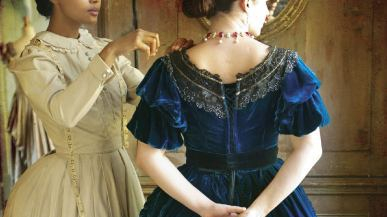
The Heroine’s Journey of Elizabeth Hobbs Keckley
In Mrs. Lincoln’s Dressmaker, a historical fiction novel that profiles the life of Elizabeth Hobbs Keckley, novelist Jennifer Chiaverini resists telling Keckley’s story as a hero’s journey arc in favor of a more complicated, seering heroine’s journey . Keckley, an African American lived from 1818 to 1907. She lived as a slave for thirty-seven years before earning her freedom by becoming an expert seamstress for wealthy women in the pre-civil war Washington D.C. area.
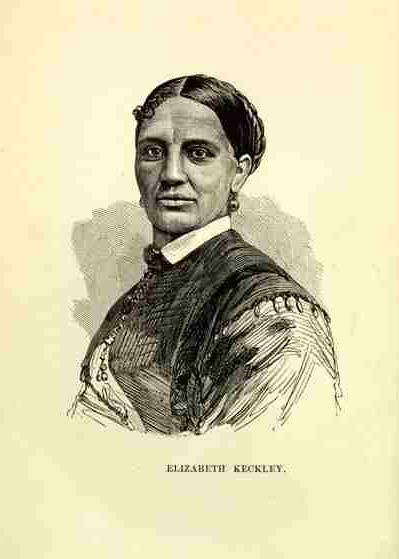
Mrs. Lincoln was a complicated woman with many physical maladies who never fully recovered from her grief of losing her youngest son shortly after Lincoln was elected President. Keckley’s son dies in the Civil War, but but Mrs. Lincoln is so fraught by her own grief that she cannot empathize with Keckley or the thousands of other mothers whose sons are killed in the war. Her husband’s assassination as she sits next to him is yet another terrible blow. Mrs. Lincoln is portrayed as being unprepared to leave the White House and live on her own after her husband’s assassination. She has grown psychologically dependent on Keckley’s support, so Keckley reluctantly agrees to accompany her to Chicago although Mrs. Lincoln is unable to consistently pay her.
In the book’s final chapter, Chiaverini depicts Keckley, then in her 80’s, being interviewed by a young reporter who asks what it is like to be so famous. Keckley is described as being fully aware of the world as it is—fame and fortune can wax and wane. Effort, intention, and justice play a role, but success is often short-lived and followed by heartbreak. Keckley informs the reporter that knowing famous people does not mean that she herself was famous, and that it would be fool hardy to take pride in something so fickle and fleeting as fame.

To learn more about Jennifer Chiaverini and/or read Mrs. Lincoln’s Dressmaker , consult your local library or go to https://jenniferchiaverini.com .
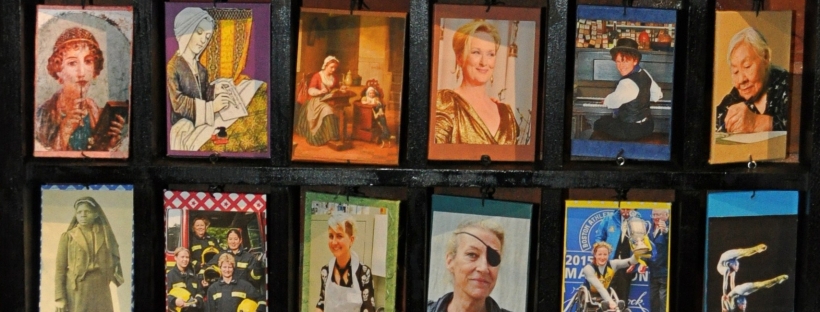
Wholeness Introduces Herself to Promises of Happiness and Success
Written by Nancer Ballard; ed. assistance Savannah Jackson.
Unlike Heroines’ Journeys, The Hero’s Journey ends with the hero returning to his tribe, kinsmen, country, or home with the Elixir. In Hero Journey stories such as the Lion King, Star Wars, Lord of the Rings , or Wonder Woman , the hero (male, female, or otherwise) finds the treasure, restores his tribe’s lost honor, learns the magic code, or discovers the key to success and is rewarded with recognition, status, and respect.
Maureen Murdock describes the heroine’s quest as an “inner journey toward being a fully integrated, balanced, and whole human being.” Although Murdock focuses on the integration of feminine and masculine personality traits, the heroine’s journey can be understood as a quest to integrate almost any two dichotomies, binaries, opposing concepts, or ideologies. Victoria Schmidt ’s version of the heroine’s journey concludes with a “Rebirth– the Moment of Truth” when the protagonist faces her own (and others’) fear with compassion and returns to the “perfect world” or “the world seen for what it is.” The reward for the journey is an integrated connection to the world and something larger than herself.
The Heroine Journeys Project team believes that the Heroine’s Journey is, in essence a search to affirm and experience wholeness. By definition, wholeness necessarily includes both sides of a binary including the masculine and feminine, but also success and failure, perfection and imperfection, joy and grief, happiness and despair, respect and disrespect, glory and stunning disappointment, etc. The world and human experience encompasses each of these things, so respite from disappointment or suffering is temporary so long as life, or the story, continues.

Artist book by Nancer Ballard depicting pleasant and unpleasant aspects of creative cycle
Throughout our lives, most of us are told that loyalty, hard work, sacrifice, and some notion of universal fairness (sometimes called Destiny) will bring us Happiness and Success and eradicate our suffering, frustrations, and disappointment. We are taught that it is possible to “make it,” and become our family/tribe/community leader or win a coveted personal relationship and live happily ever after…. or at least a relatively care-free comfortable life. Many of us know differently but still secretly believe in the mythical hero’s journey arc because we have grown up in a binary-soaked culture and recoil from the unpleasant aspects of wholeness we have been led to believe are unnecessary.
A few months ago I was given a poem by Lynn Ungar (which she has graciously allowed us to share) that describes the kind of stories and lives that royalty and most of us commoners actually live rather than the make-believe myths we think we want to live.
I’ll tell you a secret. There is no happy ending. Also no tragic conclusion. The prince and princess don’t live happily ever after. They live happily sometimes, and sometimes they are stricken with so much grief that they know their hearts will explode— which never actually happens— and sometimes they are well and truly and deeply bored, and ready for the tiniest of catastrophes to shake them awake.
They will not, of course, live ever after. No one does. But they might have children who carry on the royal line, or friends who tell the story of how the witch showed up at the baby shower, or maybe they planted trees. One way or another the story inevitably continues. Pray that it is some kind of story about love.
In this poem, love is viewed as the best glue for a full evolving life rather than the reward that ends the story-life arc with flatlining good fortune. A good working definition of “love” is an enduring, positive, attentive connection between two (or more) separate beings that creates a relationship. The relationship is distinct and larger than its individual members or constituents. Love does not abolish loneliness and vulnerability, but having a positive, enduring connection with others can make the pain of being alone and being imperfectly understood tolerable. A loving connection also provides company in times of vulnerability.
In Maureen Murdock’s formulation of the Heroine’s Journey, the final step in the cycle is integration. Integration has several meanings. It can refer to the act or an instance of combining disparate elements into an integral whole—as in the integration of personality. But integration can also refer to harmonious behavior of individuals within a larger environment, or to the coordination of distinct previously segregated elements within a unitary system—as in the integration of a school system. In other words, integration can refer to blending or synthesizing or to the coordination of parts in which the parts retain their individual distinctness and integrity within a larger whole. Love draws upon both types of integration. Unless the individuals in a loving relationship maintain their individual selves and identities, the result is a merging of one person into another, or domination and subordination, rather than connection borne by love. Love’s connection also produces a relationship which neither person can create by themselves. Their relationship, a product of their connection to themselves and each other, is a third thing that is something different than the sum of its parts—just as a story depends upon character, action, motivation, and result but is more than the sum of these elements. As in a relationship, each element in a story is necessary and significantly influenced by other elements but can still be somewhat differentiated from the other parts.
Integration of the masculine and feminine, and whatever other binaries are at stake, can involve blending, synthesis, or the coordination of separate elements that retain their individuality within a larger whole. The best stories and fullest of lives involve evolving combinations of each of these.

We appreciate Lynn Unger’s allowing us to share “The Story” in this post. To learn more about Lynn Unger’s work and/or purchase her book of poetry, Bread and Other Miracles , go to http://www.lynnungar.com .

Wonder Woman: Another Hero’s Journey Hollywood Success
Written by Savannah Jackson; ed. assistance Nancer Ballard.
Leading up to, and since its release, the DC superhero(ine) movie Wonder Woman (2017) has garnered approval for partaking in the new wave of “feminist” movies due to its female director (Patty Jenkins) and protagonist. The movie follows Diana Prince (Gal Gadot) who, having grown up in a mythic land surrounded only by powerful women, struggles to achieve success in a man’s “real” world (both on and off the battlefield) and make sense of her identity. Placing a confident woman hero on the big screen is a success for female representation in the film industry, but the movie does little to alter the typical male heroic plot. Some have argued that Diana’s completion of the Hero’s Journey is long-needed proof that the monomyth applies to both men and women, but this ignores countless women who’ve already gone through the Hero’s Journey, and men who’ve completed the Heroine’s Journey . We believe that, while this movie shows young girls and women that they can take the main stage, it fails to present them with any alternative to the masculine narrative society usually demands they fit themselves into if they want to succeed.
In the recent movie, Diana’s story begins on the secluded, paradisiacal island of Themyscira, and it is all Diana has ever known. This is her ordinary world where she feels safe and comfortable, and yet, there is tension between her and her mother, Hippolyta (Connie Nielsen), who forbids her from learning to fight, knowing that Diana’s growing strength makes it easier for Ares (David Thewlis), the god of war, to discover and destroy her. Diana looks up to her aunt Antiope (Robin Wright), who goes behind Hippolyta’s back to teach Diana to fight and is a strong role model ( mentor) for the young superheroine-to-be. Diana refuses her personal call to leave the island out of respect for her mother’s wishes—to a certain point. However, the death of her mentor and her second call to adventure coincide when World War II pilot Steve Trevor (Chris Pine) crashes from the sky and convinces Diana that the world beyond her island cannot be ignored.
While many Hero Journey characters metaphorically cross the threshold, Diana literally crosses the veil that separates and protects Themyscira from the time-bound outside world currently engaged in WWII. Diana encounters her tests, allies, and enemies as she befriends those fighting with Steve (Samir, Charlie, and Chief) in the war, struggles to comprehend the suffering around her, and combats the villainous Nazi doctors (Ludendorff and Dr. Maru). As the team goes through their approach and prepares to confront and defeat the doctors creating weapons of pain and destruction, Diana reaches her ordeal when she decides to cross through No Man’s Land.

Through this scene, Diana recognizes her potential and secures her position as a leader. There is reward in the trust she has gained and the brief moment of peace experienced by the small town she liberates. For a moment Diana imagines a less chaotic life with Steve, but she’s not deterred from continuing with their plan to kill the Nazi doctors and thus end the production of their weapons. The group finally confronts Ludendorff but is unable to prevent the death of the people of the small town Diana liberated only moments ago. Diana eventually kills Ludendorff, but this does nothing to end the war, and she grapples with the reality of this. Diana loses faith in the possible goodness of man but when Steve tells Diana she is the best equipped to save mankind, she accepts all her superhuman powers and fights Ares (e.g. Resurrection). Having accepted and fully achieved her role as a superhuman weapon, Diana turns Ares’ power against him and defeats him, thus reaching the climax of the movie. Having been recognized as a leader and savior by Steve—the ones who counts in Diana’s mind—the movie jumps to Diana in the modern day where she continues her commitment to fight for justice, keeping the picture of her times with Steve close at hand.
Wonder Woman’s message that a Hero’s Journey can be completed by both women and men is not revolutionary, although it is a positive development that Diana, as a female hero, isn’t immediately killed upon completing the journey’s arc. At its core, the movie reinforces the masculine Hero’s Journey paradigm rather than moving toward a larger vision of wholeness. Throughout her journey, Diana seems to only come closer to the preordained role she already desired. She questions the efficacy of violence when she succeeds in killing Ludendorff and nothing changes, but instead of altering her worldview and coming to terms with this, she doubles down and confronts Ares to destroy him and end the war.
There is ironic beauty in Diana defeating Ares by harnessing his own power and turning it against him, but this is not necessarily a new, un-masculine tactic. Diana kills the god of war, and in the flash forward to the future, she seems to still be content with this. She accepts her duty to protect mankind even if they do not deserve it but falls short of healing a mother/daughter split. Diana does not have to reconcile her view with her mother’s admonition that “fighting does not make you a hero.” In the present “real” world, Diana Prince—Wonder Woman—still fights in the name of justice, and ultimately is stuck within the constraints of the Hero’s Journey.

- Already have a WordPress.com account? Log in now.
- Subscribe Subscribed
- Report this content
- View site in Reader
- Manage subscriptions
- Collapse this bar
- LGP Stories
☰ Menu
Crafting Ministry in an Interconnected World
Doctor of leadership in global perspectives: crafting ministry in an interconnected world, navigating the heroines journey.
Written by: Akwese on February 1, 2024
As I delved into this week’s readings, I couldn’t help but think about the patterns I’d seen among leaders that brought me to this doctoral program. No matter what initial goal or challenge they wanted to work on, at its core was a need to be seen, heard, and accepted. Despite the diversity of individuals I’d encounter, our conversation around their challenges would inevitably circle back to a common theme: an internal struggle with identity. It didn’t matter if they were in their first professional roles or CEOs of companies, each wrestled to grasp a deeper sense of who they are and why they exist. Both questions are vital to what Joseph Campbell claims is a universal quest for fulfillment and wholeness that he illustrates in his book, “The Hero with a Thousand Faces.”
Campbell argues that mythology not only reflects the world around us but also shapes our understanding of reality and helps us discern our place within it. He suggests myths are maps and offers a framework called The Hero’s Journey, which rests upon three main parts: separation — initiation — return. [1]
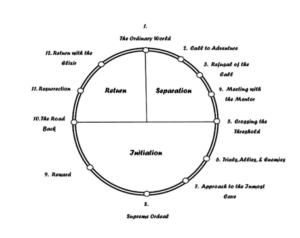
Diagram of the Hero’s Journey
The Hero’s Journey has influenced a variety of leadership programs I’ve participated in as well as which I’ve led. What’s powerful about the framework is that it allows each one of us to be the hero in our own story and provides an overview of what to expect along the way, which can be reassuring when trials come.
I appreciate how this book points to the larger journey of what it means to be human and spirit, highlighting how we must learn to hold the two at the same time, without attachment or strife but simply navigating from a place of abundance in light. Whereby one no longer believes the lies of separation but recognizes our true nature as love. “The ultimate experience of love is a realization that beneath the illusion of two-ness dwell identity: ‘each is both.’ [2] The core message of the Hero’s Journey is that of a discovery of Oneness.
Yet critiques of the Hero’s Journey, like TD Storm’s observation in “Why the Hero’s Journey May Not Be Right for Your Story,” challenge its universal applicability.[3] Maureen Murdock provides a feminist lens through the Heroine’s Journey where the main conflict is internal, between the competing masculine and feminine nature within oneself. [4]
In my journey of guiding leaders through their own inner explorations I’ve always been vocal about how spiritual this work is. However, over time I began to realize that without a specific rooting in one’s faith, through a personal relationship with God, people could only go so far. When I think about the leadership challenge of inadequacy and misplaced identity, I’ve often wondered if one can ever truly grasp who they are without first understanding whose they are.
Campbell states “The hero is the man of self-achieved submission. But submission to what? That precisely is the riddle that today we have to ask ourselves and that it is everywhere the primary virtue and historic deed of the hero to have solved.” [5] For me, it’s only by returning back to what I know about God and who the Word says I am that I have been able to find peace from the voices that attack my sense of my worth and value.
But how do you help people explore this question of ‘submission to what?’ and become comfortable in the act of obedience required in submission while living in a world where these words have been used for centuries to strip people of their dignity, silence their voice, and oppress them?
Attempts often feel surface level unless we really drop into an understanding of the radical nature of Jesus, the fullness of the Kingdom of God, and the authority we’ve been given as co-creators and inheritors of that Kingdom. This means a deep dive into the supernatural to bring heaven on Earth through miracles, signs, and wonders, doing all that Jesus did and more, as indicated in John 14:12 [6]
But where do we find support for this type of journey? Leadership programs offer one route but they can only take us so far. Churches or spiritual formation programs offer another but they too are often ill-equipped to move us to the realms that God has for us, and sadly some even set us back on our journeys by planting a seed in our minds of a God who doesn’t love, welcome and meet us where we are.
While struggles of wholeness, purpose, worth, and belonging are universal, I feel particularly called to a deeper exploration of how they impact women of color since we know that these issues only become further pronounced and more complex when marginalization is present. Thus my doctoral work centers on Reclaiming Identity and Power: Navigating the Intersection of Faith, Social Justice, and Self-Care Among Women of Color in a White-Supremacist, Capitalist Patriarchy.
Still curious as to whether any story arcs take into account the unique experiences of women of color, I stumbled upon Victoria Schmidt’s revamp of the Heroine’s Journey, where she expands the journey Murdock first introduced, adding more layers of depth through nine key stages. [7]
I was surprised by how closely this journey outlined what I’d intuitively known and witnessed. It was also a powerful visual of what stage the women were at before our worlds collided and of the role of community. Here, each woman must do more work on their own before being met with the support of a collective of sisters who serve as mirrors, reflecting back her true nature. What I also appreciate about this story arc is that the “reward” during the return stage is spiritual, and internal and creates a ripple effect. “They know themselves better and are committed to mutual interactions with their world.”[8]
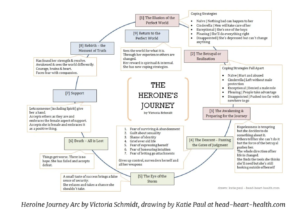
Victoria Schmidt Heroine’s Journey
Indeed this offers a lot of food for thought as I move forward in my research. However, it still doesn’t integrate the supernatural power of God through partnership with the Holy Spirit, in the way that is needed. As the semester continues, the question I will focus on addressing is what role community and collective healing play in the reclaiming of identity and power for Women of Color, and how can this be integrated into a faith-based framework that aligns with their unique experiences?
[1]Joseph Campbell, The Hero with a Thousand Faces (Novato, CA: New World Library, 2008), 23.
[3] Storm, T. D. “Why the Hero’s Journey May Not Be Right for Your Story.” Storm Writing School, October 20, 2017. https://www.stormwritingschool.com/why-the-heros-journey-may-not-be-right-for-your-story/?utm_medium=social&utm_source=pinterest&utm_campaign=tailwind_smartloop&utm_content=smartloop&utm_term=4660938.
[4] Brunken, Jason. “Mr. Brunken’s Online Classroom – the Heroine’s Journey.” mrbrunken.happykids.taipei, December 9, 2016. https://mrbrunken.happykids.taipei/middleschool/news/theheroinesjourney.
[5] Joseph Campbell, The Hero with a Thousand Faces (Novato, CA: New World Library, 2008), 23.
[6]The Holy Bible. London: Hodder And Stoughton, 1992.
[7]“Victoria Lynn Schmidt’s Heroine’s Journey Arc.” The Heroine Journeys Project. The Heroine Journeys Project, March 19, 2015. https://heroinejourneys.com/heroine-journey-ii/.
About the Author
7 responses to “Navigating the Heroines Journey”
Akwese, I love this… “Attempts often feel surface level unless we really drop into an understanding of the radical nature of Jesus, the fullness of the Kingdom of God, and the authority we’ve been given as co-creators and inheritors of that Kingdom. ” This idea could probably take a whole book to unpack. I have been reflecting on the Trinity and how a person shaped by the Trinitarian dance would demonstrate more of this life in their leadership. Being and function are inseparable. How could we make what you describe normative in the development of Christian leaders?
Oh, Graham, you ask a great question! I too wonder this same thing. You mentioned being and function as inseparable and I think that’s key. The way I’ve been thinking about it is as embodiment — how do we truly embody what we say we know and believe?
When I think of your question of how to make this more normative in the development of Christian leaders, my mind automatically goes to two things:
1. centering the training around a community of praxis where leaders journey together for a good chunk of time. I almost want to say we need to invite people into a commitment that serves as a way of being together for the long haul, maybe a 2-year container with regular touchpoints that provide a safe space to reflect on and practice how one can live their values in action and anchor in the faith 🤷🏽♀️
2. learning to host the Holy Spirit should be central to teaching. I believe we need to help people get in tune with the Spirit of God within them. The Holy Spirit was sent as our Helper and thus how can we expect to have any type of meaningful change without relying on this partnership. I also think so many people struggle to tangibly feel the Spirit at move in their lives so it important to focus on experiences. If I’m not mistaken I think it was you who said something along the lines of making God come alive which I love. What does an alive God look like? feel like? taste like? sound like?
When I was young, maybe in elementary school I remember going to services where we’d be invited to ask for a word from God and then wait on the Lord and and share anything we heard. Simply having time to soak in the Spirit with encouragement to share, regardless of whether you felt God clearly speak or not, provided a training ground to grow in confidence of my ability to hear God by simply tuning my ears to the variety of ways in which the Spirit speaks, without dismissing or downplaying. Overall we must train our leaders to expect God to respond in profound ways and then trust that He will!
I sensed your full engagement in “the larger journey of what it means to be human and spirit, highlighting how we must learn to hold the two at the same time, without attachment or strife but simply navigating from a place of abundance in light.” Your words remind me of one of my favorite films directed by Mira Nair. In her tale set in 16th century India, the heroine, Maya, is on a journey of coming to understand real love, “the hardest task of all, the work for which all other work is but preparation….where each become both.” Can you share some lessons you have you learned on how to hold that tension between human and spirit, where each become both?
Oooh Erica, I see you’re coming with the hard questions 😉
Hmm…I’m going to do a bit of a free write on this below
When it comes to lessons I’ve learned on how to hold the tension between human and spirit: – hold it lightly, as it wasn’t made to be firmly gripped – holding this tension is both hard and easy. Hard in the flesh but easy in the Spirit. – that the key is to remember and cling to that which is real. This goes against everything we’ve been taught in this world so it’s important to remind yourself regularly that ” this is countercultural work”. – that everything is actually quite easy and there are no real issues. What makes it hard is that so much of my flesh wants to hold onto the lie rather than rest in what’s true. – that I only suffer to hold both when I forget to see with my spiritual eyes and instead use my physical. – it requires detachment and surrender, both of which are continual – that grace upon grace must be regularly given to yourself – that bringing laughter and a childlike curiosity to this dance makes it fun -that God made us both spirit and flesh and so there is no “bad” or “wrong” part of me I need to be ashamed of or try to rid myself of. – that God made humans with intentionality to bring His name glory so my role is to care for this body so it can be used as a vessel. -unapologetically doing what God calls you to do is how we would all activate greater levels of faith and thus strengthen our spirit man – we are spirit first and foremost. – when all feels exhausting and overwhelming, fall on your face and make a joyful cry to God! -that miracles are daily occurrences that simply require a willingness to allow God to change the way you see
Ha okay, I’m going to leave it there for now. Thanks for that fun exercise! I can tell we’re kindred spirits here. What might you have to add?
I feel like you provided a summary I need to print out and post on my bathroom mirror as a daily affirmation! Maria Tartar also enlarges Campbell’s view to include the heroines journey in “Heroine with 1001 Faces.” I haven’t read her book but perhaps it could add a thought to your question about “community and collective healing play in the reclaiming of identity and power for Women of Color.” I will be following closely as this question will come up in my research as well.
Ha! Yes do it! I have so many affirmations all over my walls and its amazes me the impact they make in helping embody my beliefs and intentions ❤️
Thank you for this book recommendation! I’ve just found it on Amazon & will have my cousin bring it with her when she comes to visit 😉 I was actually really blown away by Victoria Schmidt’s revamp of the Heroine’s Journey. It too hits at the role of the collective and really invites Spirit into the framework as well. I’ve been geeking out on it actually and am shocked I hadn’t previously been aware.
Will you remind me of your NPO and share your research question?
Because of the expectation to assimilate in predominantly white nonprofit organizations, Black women experience greater isolation, dissociation and burnout than their white peers.
How do Black women’s experiences in predominantly white nonprofit organizations compare to their white peers, and how does faith impact their ability to thrive in such environments?
Leave a Reply Cancel reply
You must be logged in to post a comment.
View Posts by Cohort
Blog authors.

- Entries feed
- Comments feed
- WordPress.org
© 2024 DLGP Blog
- Preplanned tours
- Daytrips out of Moscow
- Themed tours
- Customized tours
- St. Petersburg
Theatres in Moscow
Cultural life of Moscow city is various and rich! Operas, ballets, symphonic concerts... Russian composers have created some of the most beautiful classical music. Russian classical music is very popular in Moscow. It is performed in many beautiful historical venues. Do not forget to include a visit to a concert hall in your itinerary when you are planning your stay in Moscow! And do it in advance.
There are almost no restrictions on dress code in Russian theatres. Visitors may wear jeans and sports shoes, they may have a backpack with them. Only shorts are not allowed.
A typical feature of Russian theatre – visitors are bringing a lot of flowers which they present to their favorite performers after the show.
Here are some practical advices where to go and how to buy tickets.
The Bolshoi Theatre
The Bolshoi Theatre is the oldest, the most famous and popular opera and ballet theatre in Russia. The word “Bolshoi” means “big” in Russian. You can buy a ticket online in advance, 2-3 months before the date of performance on the official website . Prices for famous ballets are high: 6-8 thousand rubles for a seat in stalls. Tickets to operas are cheaper: you can get a good seat for 4-5 thousand rubles. Tickets are cheaper for daytime performances and performances on the New Stage. The New Stage is situated in the light-green building to the left of the Bolshoi's main building. The quality of operas and ballets shown on the New Stage is excellent too. However, you should pay attention that many seats of the Bolshoi’s Old and New Stages have limited visibility . If you want to see the Bolshoi’s Old Stage but all tickets are sold out, you can order a tour of the theatre. You can book such a tour on the official website.
If you want, following Russian tradition, to give flowers to the performers at the end of the show, in the Bolshoi flowers should be presented via special staff who collects these flowers in advance.
In August the Bolshoi is closed.
The Stanislavsky and Nemirovich-Danchenko Music Theatre
This theatre is noteworthy. On one hand, it offers brilliant classical opera and ballet performances. On the other hand, it is an experimental venue for modern artists. You can check the program and buy tickets online here http://stanmus.com/ . If you are opera lover, get a ticket to see superstar Hibla Gerzmava . The theatre has a very beautiful historic building and a stage with a good view from every seat. Tickets are twice cheaper than in the Bolshoi.
The Novaya Opera
“Novaya” means “New” in Russian. This opera house was founded in 1991 by a famous conductor Eugene Kolobov. Its repertoire has several directions: Russian and Western classics, original shows and divertissements, and operas of the 20th and 21st centuries. It is very popular with Muscovites for excellent quality of performances, a comfortable hall, a beautiful Art Nouveau building and a historic park Hermitage, which is situated right next to it. You can buy tickets online here http://www.novayaopera.ru/en .
Galina Vishnevskaya Opera Center
The Opera Center has become one of the best theatrical venues in Moscow. It was founded in 2002 by great diva Galina Vishnevskaya. Nowadays its artistic director is Olga Rostropovich, daughter of Galina Vishnevskaya and her husband Mstislav Rostropovich, great cellist and conductor. Not only best young opera singers perform here, but also world music stars do; chamber and symphonic concerts, theatrical productions and musical festivals take place here. You can see what is on the program here http://opera-centre.ru/theatre . Unfortunately “booking tickets online” is available in Russian only. If you need help, you can contact us at and we can book a ticket for you.
Tchaikovsky Concert Hall and The Great Hall of Moscow Conservatory
These are two major concert halls for symphonic music in Moscow. Both feature excellent acoustics, impressive interior, various repertoire and best performers. You can check the program here http://meloman.ru/calendar/ . You need just to switch to English. Booking tickets online is available only for owners of Russian, Ukrainian and Belorussian phone numbers. If you need help, you can contact us and we can book a ticket for you.
Moscow International Performing Arts Center (MIPAC)
This modern and elegant concert hall houses performances of national and foreign symphony orchestras, chamber ensembles, solo instrumentalists, opera singers, ballet dancers, theatre companies, jazz bands, variety and traditional ensembles. Actually, it has three concert halls placed on three different levels and having separate entrances. The President of MIPAC is People’s Artist of the USSR Vladimir Spivakov, conductor of “Virtuosy Moskvy” orchestra. You can see pictures of the concert halls here http://www.mmdm.ru/en/content/halls . The program is impressive in its variety but is not translated into English. You can contact us at and we can find a performance for you.
14 episodes
What if the answer to shifting moments of crisis into turning points of expansion and opportunity was looking inward? Based on the work of Maureen Murdoch, Victoria Lynn Schmidt, Joseph Campbell and others, the Archetypical Heroine’s Journey outlines the universal quest for self-discovery; interdependence; and contribution from a space of intuition and profound acceptance. Like the phoenix that rises from the ashes, we travel to the depths of our souls to reclaim our inner power. Using the narrative and symbolic map of THJ, this podcast explores some of the most important themes of what it means to be human with eight incredible guests, in a first season of 12 episodes (6 in Spanish and 6 English).
The Heroine’s Journey Christine Raine
- Society & Culture
- 24 AUG 2023
🇪🇸 Integración y Cierre, “Hay belleza inesperada en la adversidad”, con Christine Raine
A veces la adversidad nos confronta con la muerte de historias para despejar el camino para cosas nuevas. En tiempos así, el apoyo de seres queridos y de una comunidad puede ser invaluable. Adonde antes veíamos tragedia, emerge un sentido de posibilidad. En este último episodio en español de la primera temporada, Christine habla del dolor y la belleza de su propio viaje la heroína, con co-productora Nandi Edina. RecursosMúsica de Nick MulveyMúsica de PassifloraCuenta tu historia en un correo de voz
- 1 hr 10 min
🇺🇸 Integration & closure, “There is beauty in adversity”, with Christine Raine
Life is full of beauty, even in adversity. In fact, sometimes adversity allows us to let go of stories that were ready to die, clearing the way for new ones fo emerge. In times like these, the support of loved ones and community can be irreplaceable. In this final English-language episode of season one, Christine discusses her own painful and beautiful heroine’s journey with producer Sarah Selim. ResourcesMusic by Nick MulveyMusic by PassifloraTell your story in a voicemail
- 10 AUG 2023
🇪🇸 Fase 4: El Regreso, con Arlette Fait
“El Regreso” es la cuarta fase del Viaje de la Heroína. Del viaje a nuestro interior nacen frutos que compartimos con nuestra comunidad. En este episodio, Christine habla con Arlette Fait, psiscóloga clínica de más de 15 años de experiencia y además la terapeuta de Chris, sobre sus aprendizajes al salir de una relación agresiva. Juntas exploran cómo los momentos de crisis pueden ser tierra fértil para nuestra evolución, si tenemos las formas, herramientas y perspectiva para abordarlas.
🇺🇸 Phase 4: The Return, with Nathan Getzin
Christine speaks with musician and immersive sound healer & producer Nathan Getzin about the journey into vulnerability he undertook for the sake of his relationship, which required laying down the armor and weapons of masculinity he had been taught to carry. The last phase of THJ, “The Return” is not just about personal growth, but also about bringing our newfound wisdom and gifts back into the community. Nathan shares about how his own inner exploration impacted the work he does today. Alongside Christine they take on big topics such as what authenticity means; the relationship between vulnerability and discomfort; unconscious gaslighting; an invitation to hearing our own voice; and the beauty that comes with accepting ourselves completely. Special surprise at the end! ResourcesWakes – Nathan & Ada’s music and healing practiceThe Breeze at Dawn – poem by RumiOn Being, with Krista Tippett
- 1 hr 18 min
- 27 JULY 2023
🇪🇸 Fase 3: Emerger, con Diego Delfino
El punto de partida de la tercera fase del viaje -el Emerger- es una muerte simbólica. En este episodio Christine habla con el periodista Diego Delfino, reconocido por sus contribuciones al periodismo costarricense y creador del medio ciudadano Delfino.cr, sobre cómo la depresión puede representar una muerte que permite un renacimiento y una oportunidad de convertirse en una versión más auténtica y libre de uno mismo, si estamos dispuestos a hacer el trabajo que se requiere. Diego y Christine exploran temas como la auto-responsabilidad; la aceptación y el amor propio; y cómo la validación más importante y liberadora de nuestras vidas viene de adentro.
🇺🇸 Phase 3: Emergence, with Sofia Rasini
The third phase of The Heroine’s Journey is the Emergence. In the stillness that follows death, something begins to stir. New like awakens and new possibilities begin to form. In this episode, Christine speaks with Sofia Rasini, co-founder of the adventure therapy non-profit Campo Base. Sofia talks about her journey into motherhood and the unexpected grief she encountered, in addition to the joy. She also shares what her experiences running camps for children with serious illnesses has taught her; and how stewarding the intention of the land & castle that she calls home in northern Italy, alongside the women in her family, supported her own rebirth. ResourcesCampo Base – Adventure therapyCastel Campo
- © Copyright 2024 Christine Raine
Top Podcasts In Society & Culture
Greyfriars Hall

The idea of formal seminary education dies hard. We have trained so many generations of ministers in this fashion that we can scarcely credit any other way of doing it
The idea of formal seminary education dies hard. We’ve trained so many generations of ministers in this fashion that we can scarcely credit any other way of doing it. Click here to learn more about our vision for pastoral training.

Greyfriars Hall is a ministerial training program which aims to prepare men for serving the Church. As such, the courses necessarily revolve around three main themes: Purity of Life, Boldness in Preaching, & Truth as Foundation.

Our faculty is comprised of men who have a wealth of pastoral experience, insight and wisdom. Class sizes are small so students can glean from our Faculty’s years of knowledge. Their pastoral wisdom is a rich augment to the training process.

For those men who are interested in beginning the process of pursuing pastoral ministry training through Greyfriars Hall: APPLY HERE.

GREYFRIARS HALL Pastoral Ministry Training
Under the oversight of Christ Church’s board of elders, Greyfriars Hall is approximately three years of rigorous study, ministry training, and biblical mentoring for men called to pastoral ministry. Though it is not a degree program, a letter from Greyfriars Hall commending them to the work of Christian ministry will be given upon successful completion.


IMAGES
COMMENTS
In 45 Master Characters: Mythic Models for Creating Original Characters, Victoria Lynn Schmidt distinguishes the Heroine's Journey from Joseph Campbell's Hero's Journey. Her Heroine's Journey arc is similar to Maureen Murdock's arc but delineates several of the stages in a way that encompasses a broader range of topics and experience.
Victoria Lynn Schmidt's version of the heroine's journey. Victoria Lynn Schmidt wrote two versions of a character's journey: The Feminine and the Masculine Journey. She published her version in 2001 in her book: 45 Master Characters. The most noticeable differences were the circular nature and that the female had to prove herself to herself.
The Heroine's Journey is an intriguing template for writers to explore, but this short guide is only the beginning. ... Mythic Models for Creating Original Characters by Victoria Lynn Schmidt (her melting pot version of the Hero and Heroine's Journeys) and The Heroine's Journey: For Writers, Readers, ...
Victoria Lynn Schmidt. ... The Heroine's Journey by Gail Carriger takes a radical diametrically opposed stance. She has produced one of the most important theoretical discussions in fiction today and trumps in aces and hearts the attempt by Maureen Murdock (Heroine's Journey Arc) to 'fit in' the female narrative to the great windbag's ...
Dear fellow explorer, Based on the work of Maureen Murdock, Victoria Lynn Schmidt and Joseph Campbell this integrated map reflects my understanding of The Heroine as the archetypical journey to our internal world, after a moment of profound rupture or crisis. ... including 1:1 mentorships and an international Heroine's journey retreat in Blue ...
Victoria Lynn Schmidt's Model of the Heroine's Journey. Victoria Lynn Schmidt's version is all about learning to accept help from a supportive community. The heroine is not facing her struggles alone. The heroine begins her journey believing she lives in a perfect world until she experiences a crisis she is unable to cope with.
Spirited Tyffany is a documentary which illustrates Dr. Victoria Lynn Schmidt's nine stages of the archetypal heroine's journey through the true story of suc...
Based on the work of Maureen Murdoch, Victoria Lynn Schmidt, Joseph Campbell and others, the Archetypical Heroine's Journey outlines the universal quest for self-discovery; interdependence; and contribution from a space of intuition and profound acceptance. Like the phoenix that rises from the ashes, we travel to the depths of our souls to ...
The Heroine's Journey: Woman's Quest for Wholeness (p. 58). Shambhala. Kindle Edition.] Schmidt begins step three with the heroine finally shedding her coping strategies because she realizes that they did not serve her well but kept her from facing reality. Although disillusioned and believing herself to be alone, she ventures onto a ...
Here, according to author Victoria Schmidt, are the nine stages of the heroine's journey. For mothers who would raise strong, whole and daughters prepared to navigate through the uncertainty of our times, this provides a whole new story, authenticating their inner awareness, intuition and adeptness, and the ability to choose friends who ...
Episode 101: The Heroine's Journey. This week, Fable and the Verbivore dig into the Heroine's Journey story structure. A couple weeks ago, we covered the Hero's Journey story structure, its prevalence in fiction and movies, and its limitations. We also loosely contrasted it with the Heroine's Journey story form and promised to revisit it ...
Barbara Leckie's "Kicking the Stone," in Salamander's Summer 2018 issue, is a wonderful, complex short story that interleaves three life stories that broadly follow Victoria Schmidt's formulation of the heroine journey. The short story revolves around the life trajectories of two sisters and a husband and the changing relationships between and among them.
Victoria Schmidt Heroine's Journey. Indeed this offers a lot of food for thought as I move forward in my research. However, it still doesn't integrate the supernatural power of God through partnership with the Holy Spirit, in the way that is needed. As the semester continues, the question I will focus on addressing is what role community ...
Radio Moscow: circa 1968. February 11, 2014. Many thanks to David Firth, who is kindly sharing shortwave radio recordings he made on his reel-to-reel recording equipment in the late 1960's. Firth is uncovering and digitizing these recordings as time allows. We are grateful for this recording of Radio Moscow, which Firth recorded in 1968.
In 45 Master Characters: Mythic Models for Creating Original Characters, Victoria Lynn Schmidt distinguishes the Heroine's Journey from Joseph Campbell's Hero's Journey. Her Heroine's Journey arc is similar to Maureen Murdock's arc but delineates several of the stages in a way that encompasses a broader range of topics and experience.
Galina Vishnevskaya Opera Center. The Opera Center has become one of the best theatrical venues in Moscow. It was founded in 2002 by great diva Galina Vishnevskaya. Nowadays its artistic director is Olga Rostropovich, daughter of Galina Vishnevskaya and her husband Mstislav Rostropovich, great cellist and conductor.
What if the answer to shifting moments of crisis into turning points of expansion and opportunity was looking inward? Based on the work of Maureen Murdoch, Victoria Lynn Schmidt, Joseph Campbell and others, the Archetypical Heroine's Journey outlines the universal quest for self-discovery; interd…
Pastoral Ministry Training. Under the oversight of Christ Church's board of elders, Greyfriars Hall is approximately three years of rigorous study, ministry training, and biblical mentoring for men called to pastoral ministry. Though it is not a degree program, a letter from Greyfriars Hall commending them to the work of Christian ministry ...